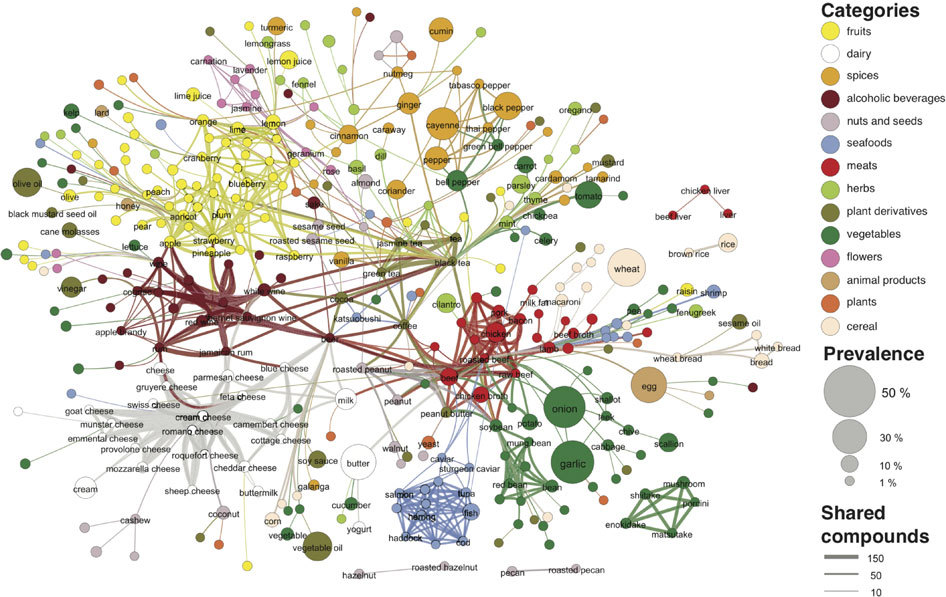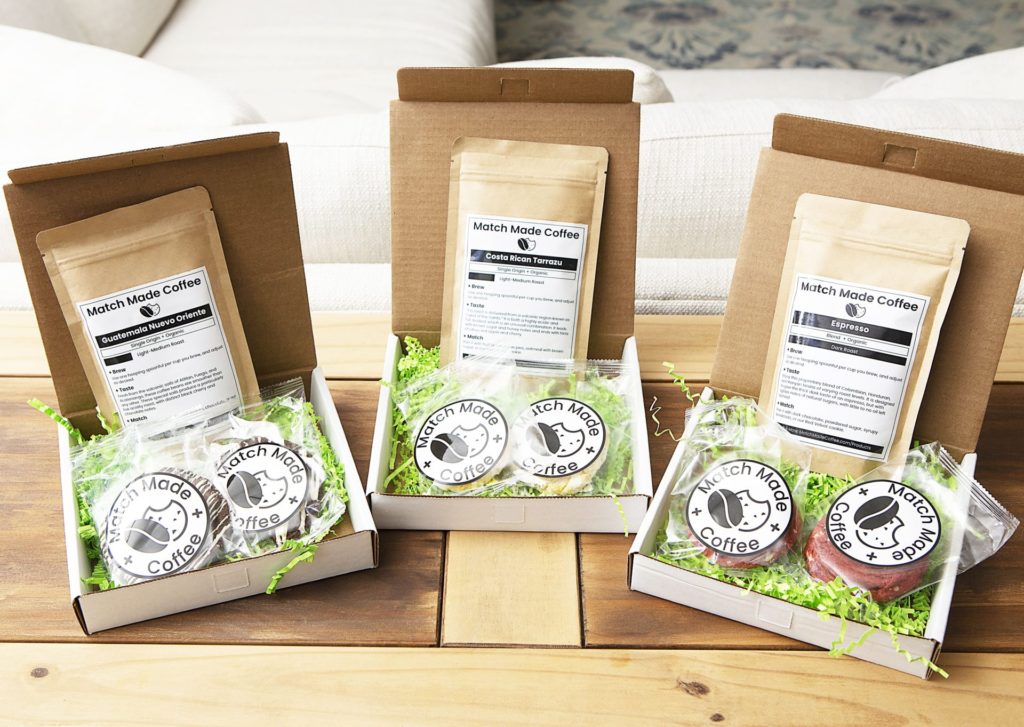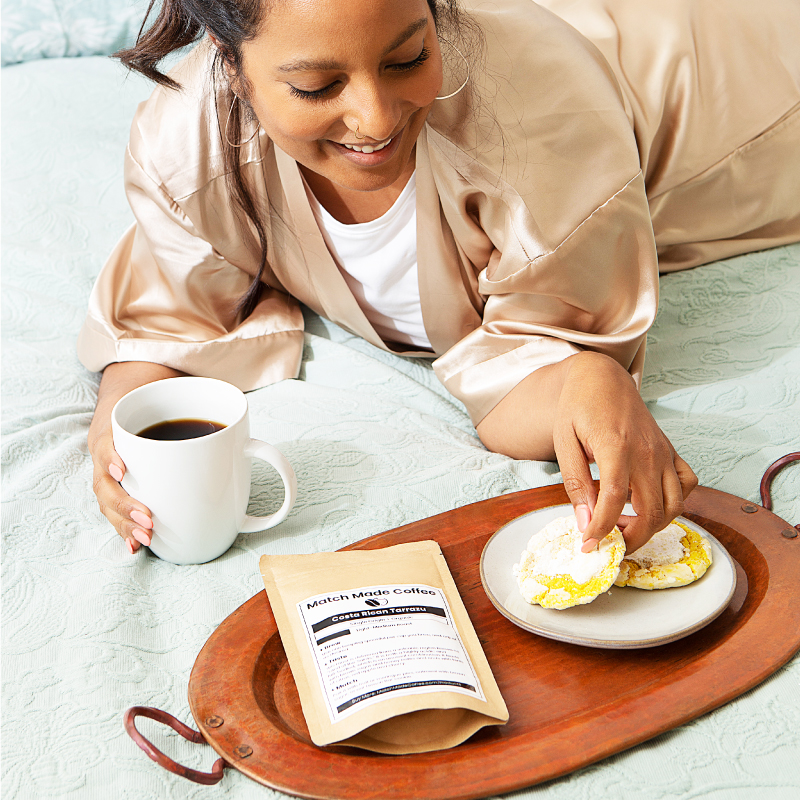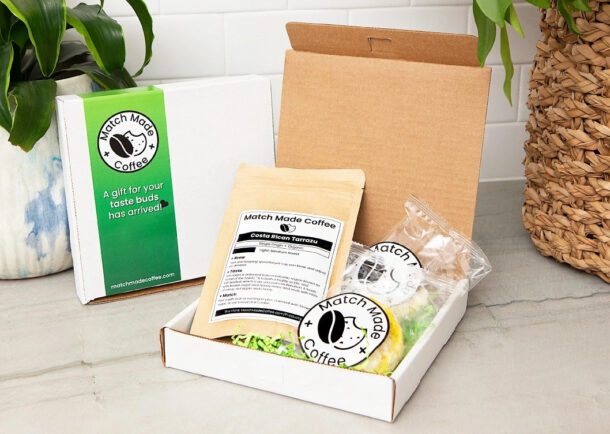We get lots of people thinking it’s a great idea to pair coffee and cookies in our subscription boxes. One question we get all the time is how do we do it? Are there any tips or tricks to follow? This article will show you the ins and outs, so that you’ll feel comfortable knowing how to pair flavors on your own.
First: What Do You Have and What Do You Want?
The first consideration is whether you are trying to pair something with a flavor you already have or not. So, maybe you have one of our coffees and you at the cookies, but are wondering what else could go with it.
This scenario would be an example of having a known flavor that you want to pair. Our coffees go pretty in depth with the flavors you can pull from them. So, now it’s just a matter of finding something to complement it.
If you don’t have something specific in mind, take a minute and think about it first. What is a single flavor that delights you that you would love to experience on numerous fronts at once? Select that flavor and move onward.
It’s easiest to pair a food and drink that go well together. That is why wine and certain cheeses or dinners go together. When you can alternate between chewing and sipping it just makes for a better overall flavor pairing and dining experience.
I’d recommend selecting the drink first in the instance of finding your own flavor pairings. Drinks are easier to keep consistent and not worry about things like burning or going bad or being seasonal or anything like that.
If you select the drink first, it’s easier to run a bunch of food experiments over time as well. Doing things this way will also help you find better pairings in the long run and more knowledge about what works or doesn’t or what you like and don’t care for.
Second, Pick One Flavor To Focus On In Your Dish
If you’re wanting to make a snack or a meal or whatever else to pair with, it is recommended to build around just one of the main flavors of the drink you’re pairing with. If you try pairing multiple flavors, it’ll probably turn out poorly and it’ll just be a hodge podge of things that might conflict with each other.
Many coffees have chocolate or vanilla flavors. These are examples of great flavors that are pretty straightforward to pair with. Dig up a brownie recipe, or some vanilla ice cream, and have at it. You won’t be disappointed.
If you’re trying to pick up a more subtle flavor in your drink, you might need the complementing dish to be a little bit stronger on that flavor. Some coffees, for example, have notes of things like cherries or honey. It can be difficult to pull that out without first trying an obvious attempt at a cherry or honey dish.
Try multiple snacks or dishes to get an idea of how strongly you want the flavors to overlap though. Sometimes a flavor can be too overwhelming. Steer clear of dishes where that is the case.
Get a dish with a mellow, nuanced flavor. It’s great if it has other secondary flavors, as sometimes those flavors are what give your flavor pairing experience a whole other level of zing.
This general approach works for any flavor pairing you may attempt, not just with coffees.
However, that first part about how to pair flavors was fairly straightforward.
For More Complexity, Consider Flavor Compounds
To go a little bit further down the rabbit hole, you need to start to understand what exactly a flavor really is.
Flavor is different from taste. Tastes are the senses themselves. They’re the variety of taste buds you learned about as a kid.
Flavor, however, is a bit more complex. It involves the flavor compounds themselves. It’s the natural compounds found in certain foods. Think of it as a complex web of a variety of foods coming together to give you a one-of-a-kind adventure in your mouth.

These compounds that build up to create complex flavors are shared by multiple foods and not always in the same food category.
If you take a look at the flavor map above, the thicker the line the more shared compounds there are. If you look carefully, you can even find coffee in there, sharing numerous compounds with everything from peanut butter to cocoa to roast beef.
Believe it or not, there are places like FoodPairing.com that are tracking and logging these compounds across many foods. Their blog offers many tips as well.
Final Tips
To get the most out of your food pairing experience though, you need to know how to properly taste food. We wrote an article about tasting here that is highly recommended.
We also have previously written about properly smelling foods and drinks, as smell and taste are highly connected.
There are certain tips and tricks to help trick your brain into making the most of your food pairing experiments. It also makes you more present in the moment and aware of all of the flavors that you are experiencing.
Too many people just eat thoughtlessly, but when you’re trying to enhance what is going on, there are certain tips and procedures that can help you do that.
Hopefully between those resources, the links, and this article, you now feel confident with how to pair flavors.
If you have any additional questions, feel free to comment!






